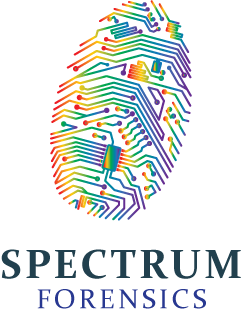ISART 2016 Energizes the Conversation on Spectrum Forensics
Earlier this month, about 160 scientists, engineers, mathematicians, policy experts and other participants representing government agencies, academic institutions and industry gathered to discuss an exciting new field of spectrum research aimed at providing novel insights on ways to address radio signal interference. Advances in this area promise to bring improvements to how spectrum is managed, in particular supporting efforts to efficiently and effectively accommodate the constantly increasing demand for use of this critical, limited. and already congested resource.
The 15th International Symposium on Advanced Radio Technologies (ISART), which took place in Westminster, Colo., kicked off with a tutorial on civil and criminal spectrum interference investigations and enforcement actions. Former and current Federal Communications Commission staffers discussed the technical aspects of identifying sources of interference and the policy and legal challenges of enforcement. They emphasized the value of technical cooperation between users sharing spectrum to rapidly mitigate interference.
 Panelists at this year’s ISART conference also covered legal and policy issues, spectrum monitoring, applicable technologies and standards, digital forensics, and data analytics. One of the biggest themes to emerge from the discussions was the inevitable rise in the “noise floor” -- the measure of the unwanted signals -- with so many more wireless devices in use. In the past, spectrum users have focused on trying to eliminate such interference. Julius Knapp, chief of the FCC’s Office of Engineering and Technology, however, spoke of moving from the idea that interference can be eliminated to an understanding that receivers will have to begin to bear some responsibility for robustness and the management of noise in their environment.
Panelists at this year’s ISART conference also covered legal and policy issues, spectrum monitoring, applicable technologies and standards, digital forensics, and data analytics. One of the biggest themes to emerge from the discussions was the inevitable rise in the “noise floor” -- the measure of the unwanted signals -- with so many more wireless devices in use. In the past, spectrum users have focused on trying to eliminate such interference. Julius Knapp, chief of the FCC’s Office of Engineering and Technology, however, spoke of moving from the idea that interference can be eliminated to an understanding that receivers will have to begin to bear some responsibility for robustness and the management of noise in their environment.
Another theme was the need for rapid and reliable investigation into the impact of the proliferation of devices attempting to operate simultaneously in the same or adjacent bands, from both a scientific and a policy perspective. Panelists discussed not only how to predict aggregate interference from many devices and protect against it, but also who bears responsibility for it when it occurs. Finally, another common thread was the need to move forward collaboratively in order to keep up with the pace of technical evolution. Transparency, trust, honest brokers, and clear rules are prerequisites to real-time interference mitigation.
By the end of the symposium, it was clear that spectrum forensics is a broad, deep area that requires contributions from many different disciplines. While forensic science has a legal definition, specific courses of study, and certifications in many physical science disciplines, there is as yet no such structural framework for spectrum forensics -- though ISART 2016 moved us a step closer to defining one. Many of the panelists and speakers presented maturing technologies that are important components of the spectrum forensics space. The challenge to the community for the future will be to integrate all the pieces into end-to-end systems that support spectrum monitoring, investigation, and enforcement.
Meanwhile, Dr. Greg Shannon, assistant director of cybersecurity for the White House Office of Science and Technology Policy (OSTP) and Chief Scientist at the CERT Division at Carnegie Mellon University's Software Engineering Institute, in his keynote address spoke of the challenges of cybersecurity and the Federal Cybersecurity R&D Strategic Plan released in February of 2016. The Plan specifically called out the need to address the cybersecurity of emerging wireless technologies, including the Internet of Things (IoT) and mobile devices.
ISART 2016, which attracted record turnout, was sponsored by the Center for Advanced Communications, a joint effort between NTIA’s Institute for Telecommunication Sciences (ITS) and the National Institute of Standards and Technology (NIST). I appreciate the efforts of all those involved in ISART 2016. The event would not have been possible without the hard work of several key people in particular including Patricia Raush from ITS, Tim Hall from NIST, Michael Souryal from NIST, Eric Nelson from ITS and Christine Carson from NIST.

